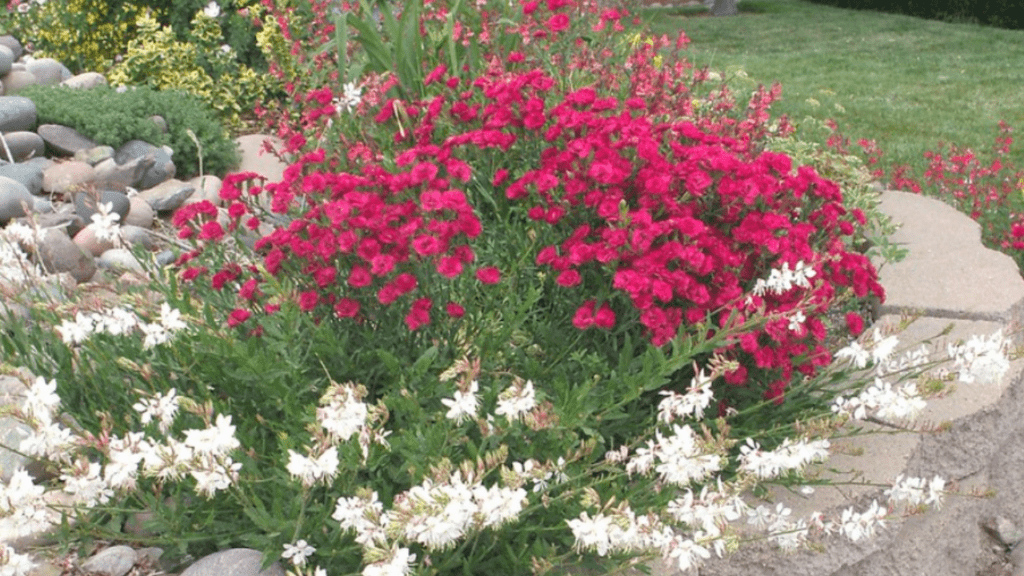
Gaura Plant Companions: Perfect Pairings for Your Landscape
When planning a beautiful and thriving garden, choosing the right companions for your Gaura plant (Gaura lindheimeri) can make all the difference. Known for its delicate, butterfly-like flowers and long blooming season, the Gaura plant companions adds elegance and movement to any garden. To maximize its growth and enhance the overall aesthetic of your garden, it’s essential to select suitable Gaura plant companions that complement its characteristics while promoting a healthy ecosystem.
Table of Contents
ToggleWhy Companion Planting is Important
Benefits of companion planting: enhanced aesthetics, improved plant health, and ecosystem balance.
Companion planting with Gaura plants can offer a range of benefits for your garden. By selecting the right companions, you can enhance the overall aesthetic of your landscape, improve the health of your plants, and promote balance in the ecosystem. When choosing companion plants for Gaura, consider factors such as color, height, and bloom time to create a harmonious and visually appealing garden. Additionally, certain companion plants can attract beneficial insects and pollinators, which can contribute to the health and vitality of your garden. By carefully selecting the perfect pairings for your Gaura plant, you can create a thriving and beautiful landscape that benefits both your plants and the ecosystem as a whole.
Top Gaura Plant Companions
Salvia (Sage)
Salvia is a great companion to Gaura plants. Sage has a beautiful, fragrant foliage that can complement the delicate blooms of the Gaura. It also attracts beneficial insects such as bees and butterflies, which can help to pollinate the Gaura plants and promote a healthy ecosystem. Additionally, sage is known for its drought tolerance, making it a great choice for planting alongside Gaura in dry or arid conditions. Overall, the pairing of Gaura and sage can enhance the visual appeal of your garden while also promoting the health and balance of the ecosystem. Consider incorporating sage as a companion plant for your Gaura to maximize the benefits for your garden.
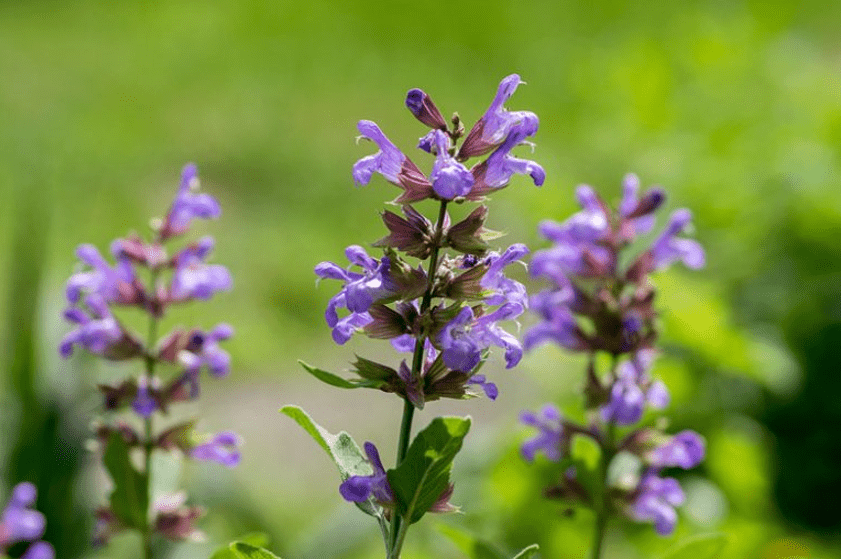
Lavender
Lavender is another great companion plant for Gaura. Lavender not only adds a beautiful fragrance to your garden, but it also has medicinal properties and is known for attracting pollinators like bees and butterflies. The combination of Gaura and lavender can create a stunning visual display while also supporting a healthy ecosystem. Lavender is also a low-maintenance plant, making it a great companion for Gaura in terms of care and maintenance. Consider planting lavender alongside your Gaura for a beautiful and beneficial garden landscape.
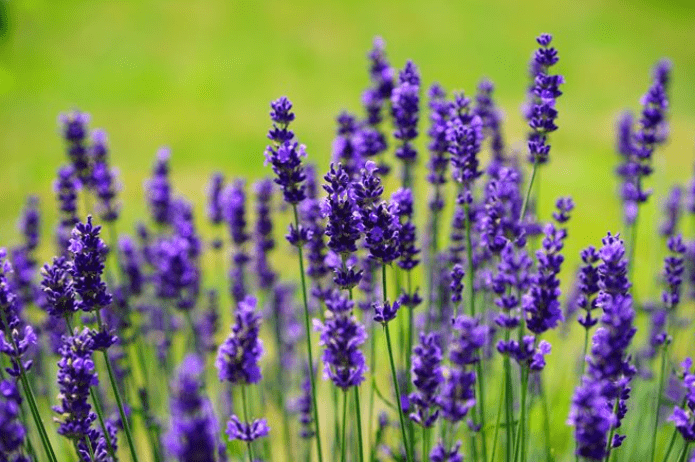
Echinacea (Coneflower)
Echinacea is another great companion plant for Gaura. Echinacea is known for its immune-boosting properties and is often used in herbal remedies. When planted alongside Gaura, Echinacea can not only add a pop of color to your garden, but it can also attract beneficial insects such as bees and butterflies. This can help to create a balanced and healthy ecosystem in your garden. Additionally, Echinacea is a low-maintenance plant, making it an easy and beneficial addition to your garden. Consider adding Echinacea as a companion plant for your Gaura to promote both visual appeal and ecological health in your garden.
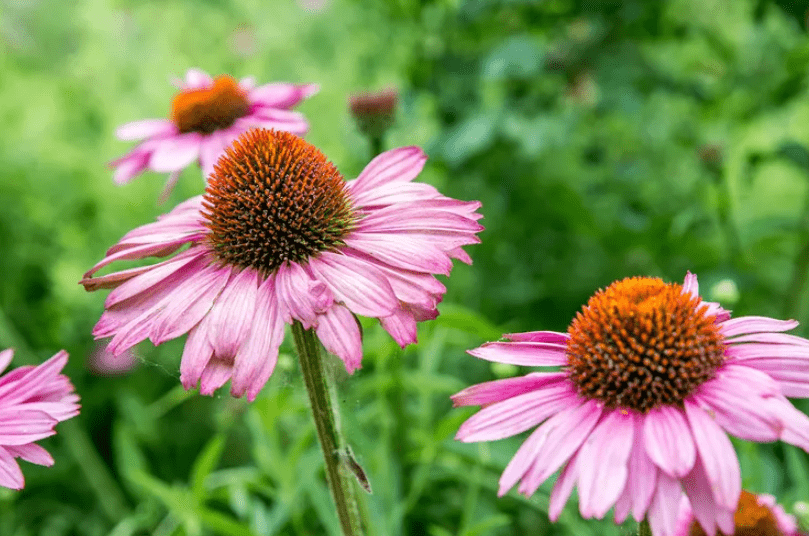
Coreopsis
Coreopsis is another great companion plant for Gaura. Coreopsis, also known as tickseed, is a beautiful and low-maintenance plant that pairs well with Gaura. It adds a pop of color to your garden with its bright yellow, red, or pink flowers. Coreopsis is also a great attractor of beneficial insects such as bees and butterflies, helping to create a thriving ecosystem in your garden. It is a hardy plant that can withstand hot and dry conditions, making it a great choice for a low-maintenance garden. Consider planting Coreopsis alongside your Gaura for a beautiful and beneficial garden landscape.
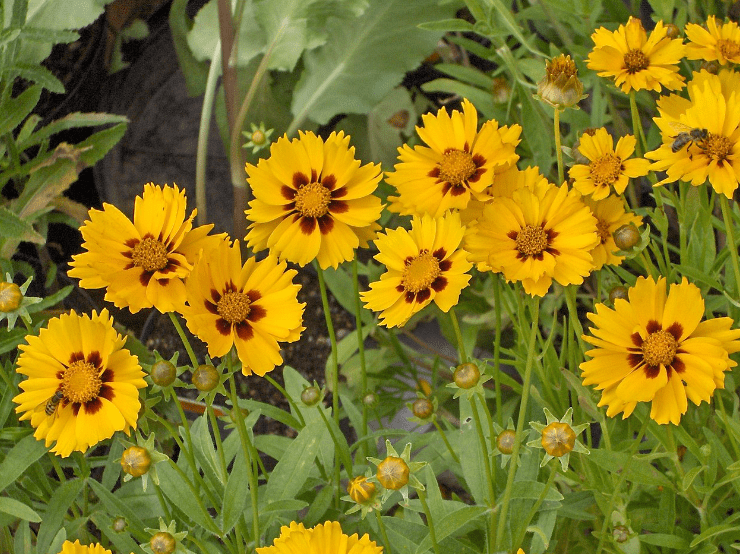
Ornamental Grasses (e.g., Miscanthus, Blue Fescue)
Ornamental grasses are a great addition to any garden, adding texture, movement, and visual interest. Miscanthus, also known as Maiden Grass, is a popular choice with its feathery plumes and graceful arching form. Blue Fescue, on the other hand, is a low-growing, clump-forming grass with striking blue-gray foliage. Both of these grasses can be used to create a beautiful backdrop or border for your garden. They are also relatively low-maintenance and can thrive in a variety of soil and light conditions. Consider adding ornamental grasses like Miscanthus and Blue Fescue to your garden to enhance its beauty and create a dynamic landscape.
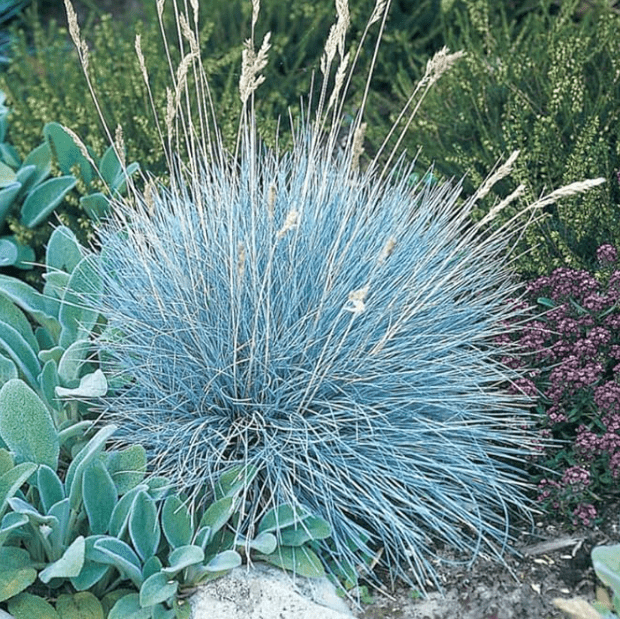
Designing Your Landscape with Gaura Companions
Tips for arranging Gaura and its companions for maximum visual impact.
When arranging Gaura and its companions for maximum visual impact, consider planting Coreopsis alongside your Gaura for a beautiful and beneficial garden landscape. Coreopsis, also known as Tickseed, is a cheerful and colorful perennial that blooms in a range of shades, adding vibrant pops of color to complement the delicate blooms of the Gaura. Ornamental grasses are also a great addition to any garden, adding texture, movement, and visual interest. Miscanthus, also known as Maiden Grass, is a popular choice with its feathery plumes and graceful arching form. Blue Fescue, on the other hand, is a low-growing, clump-forming grass with striking blue-gray foliage. Both of these grasses can be used to create a beautiful backdrop or border for your garden. They are also relatively low-maintenance and can thrive in a variety of soil and light conditions. Consider adding ornamental grasses like Miscanthus and Blue Fescue to your garden to enhance its beauty and create a dynamic landscape. Overall, when planning your garden, consider the colors, textures, and heights of the plants to create a well-balanced and visually appealing composition.
Considerations for spacing, layering, and color coordination.
When it comes to planting ornamental grasses in your garden, there are a few important considerations to keep in mind. First, think about the spacing between the grasses to ensure they have enough room to grow and spread out. You’ll also want to consider layering different types of grasses to create depth and visual interest in your garden. Additionally, pay attention to the color coordination of the grasses to ensure they complement the other plants in your garden. For example, consider mixing the feathery plumes of Miscanthus with the striking blue-gray foliage of Blue Fescue for a beautiful contrast. By carefully planning the spacing, layering, and color coordination of ornamental grasses in your garden, you can create a visually stunning and well-balanced landscape.
Seasonal planning to ensure year-round interest.
When planning your garden, it’s important to consider how to create year-round interest. One way to achieve this is by carefully planning the placement of ornamental grasses. Consider the spacing between the grasses to ensure they have enough room to grow and spread out. This will prevent overcrowding and allow each plant to thrive. Additionally, think about layering different types of grasses to create depth and visual interest in your garden. Mixing tall, feathery grasses with shorter, more compact varieties can add dimension to your landscape.
Color coordination is also important when planting ornamental grasses. Think about how the colors of the grasses will complement the other plants in your garden. For example, mixing the bold, striking plumes of Miscanthus with the soft, blue-gray foliage of Blue Fescue can create a beautiful contrast. By carefully considering the spacing, layering, and color coordination of your ornamental grasses, you can create a visually stunning and well-balanced landscape that maintains interest throughout the year.
Care Tips for a Healthy Gaura and Companion Planting
Best practices for maintaining a thriving Gaura and its companions.
When it comes to maintaining a thriving Gaura and its companions, it’s important to consider the spacing and layering of the plants in your garden. Proper spacing will prevent overcrowding and allow each plant to thrive. Additionally, think about layering different types of grasses to create depth and visual interest in your garden. Mixing tall, feathery grasses with shorter, more compact varieties can add dimension to your landscape.
Color coordination is also important when planting ornamental grasses. Consider how the colors of the grasses will complement the other plants in your garden. For example, mixing the bold, striking plumes of Miscanthus with the soft, blue-gray foliage of Blue Fescue can create a beautiful contrast.
By carefully considering the spacing, layering, and color coordination of your ornamental grasses, you can create a visually stunning and well-balanced landscape that maintains interest throughout the year. It’s also important to provide proper care for your Gaura and its companions, such as regular watering, fertilizing, and pruning as needed. With these best practices, you can ensure the health and beauty of your ornamental grasses and create a thriving garden space.
Watering, feeding, and pruning advice tailored to mixed plantings.
When it comes to mixed plantings, such as combining tall, feathery grasses with shorter, more compact varieties, it’s important to consider the specific needs of each plant. Watering, feeding, and pruning advice should be tailored to the unique characteristics of each type of plant. For example, taller grasses may require more water and nutrients than shorter varieties, so it’s important to take these factors into account when caring for mixed plantings. Proper spacing and layering of plants is also important to ensure that each plant has enough room to grow and thrive. Additionally, color coordination is important when planting ornamental grasses. Consider how the colors of the grasses will complement the other plants in your garden, and aim to create a visually stunning and well-balanced landscape that maintains interest throughout the year. By providing proper care, including regular watering, fertilizing, and pruning as needed, you can ensure the health and beauty of your mixed plantings and create a thriving garden space.
Common issues to watch for and how to address them.
When it comes to mixed plantings, there are several common issues to watch for and know how to address them. It’s important to consider the specific needs of each plant when creating mixed plantings. This includes taking into account the watering, feeding, and pruning requirements of each type of plant. For example, taller grasses may require more water and nutrients than shorter varieties, so it’s important to tailor your care routine to meet these needs.
Proper spacing and layering of plants is also important to ensure that each plant has enough room to grow and thrive. This can help prevent overcrowding and competition for resources. Additionally, color coordination is important when planting ornamental grasses. It’s important to consider how the colors of the grasses will complement the other plants in your garden and aim to create a visually stunning and well-balanced landscape that maintains interest throughout the year.
By providing proper care, including regular watering, fertilizing, and pruning as needed, you can ensure the health and beauty of your mixed plantings and create a thriving garden space. Being attentive to the specific needs of each plant and addressing any issues that may arise will help you maintain a beautiful and healthy mixed planting.
Examples of Successful Gaura Companion Plantings
Showcase of real-life garden designs featuring Gaura and its companions.
When designing a garden with Gaura and its companions, it’s important to consider the specific needs of each plant. For example, taller grasses may require more water and nutrients than shorter varieties, so it’s important to tailor your care routine to meet these needs. Proper spacing and layering of plants is also important to ensure that each plant has enough room to grow and thrive, preventing overcrowding and competition for resources. Color coordination is another key consideration when planting ornamental grasses. You’ll want to consider how the colors of the grasses will complement the other plants in your garden, creating a visually stunning and well-balanced landscape that maintains interest throughout the year.
By providing proper care, including regular watering, fertilizing, and pruning as needed, you can ensure the health and beauty of your mixed plantings and create a thriving garden space. Being attentive to the specific needs of each plant and addressing any issues that may arise will help you maintain a beautiful and healthy mixed planting. Overall, showcasing real-life garden designs featuring Gaura and its companions can provide inspiration and guidance for creating a successful and visually appealing garden.
Inspiration for different landscape styles: cottage gardens, prairie gardens, and more.
When it comes to designing your landscape, there are many different styles to draw inspiration from. Cottage gardens, for example, are known for their informal and romantic feel, with a mix of colorful flowers and lush greenery. On the other hand, prairie gardens showcase native grasses and wildflowers, creating a natural and low-maintenance landscape. Each style offers its own unique charm and can be tailored to fit your personal preferences and the environmental conditions of your garden. By taking inspiration from these different landscape styles, you can create a garden that reflects your personality and brings beauty and tranquility to your outdoor space. Whether you prefer the charm of a cottage garden or the natural beauty of a prairie garden, there are endless possibilities for creating a stunning and unique landscape design. With careful planning and attention to detail, you can create a landscape that suits your individual taste and brings joy and inspiration to your outdoor space.
Conclusion
In conclusion, choosing the right companions for your Gaura plants can greatly enhance the aesthetic appeal of your landscape. By selecting plants that complement the delicate beauty of Gaura, you can create a visually stunning and harmonious outdoor space. Consider factors such as color, height, and bloom time when selecting companion plants to ensure a cohesive and attractive garden design. With the right pairings, you can create a beautiful and inviting outdoor environment for yourself and others to enjoy.
Frequently asked questions And Answer
Some good companion plants for Gaura include lavender, salvia, yarrow, and ornamental grasses. These plants complement Gaura’s airy, delicate appearance and can create a beautiful landscape together.
Yes, Gaura can be planted with other perennials that have similar growing requirements, such as well-drained soil and full sun. Good choices for companion perennials include coneflowers, black-eyed Susans, and Russian sage.
While Gaura is a relatively low-maintenance plant, it’s best to avoid planting it near aggressive spreaders or plants that require a lot of water. Plants like mint or invasive grasses may compete with Gaura and hinder its growth.
Yes, Gaura can be used in container gardens with other plants, especially those that also prefer well-drained soil and full sun. Consider pairing Gaura with ornamental grasses, petunias, or verbena for a stunning container display.
Planting Gaura with companion plants can help create a visually appealing and diverse landscape. Companion plants can also provide support, attract beneficial insects, and enhance the overall health and vigor of the garden.
To ensure that Gaura and its companion plants thrive together, it’s important to consider their individual growing requirements and provide proper care, including adequate watering, fertilization, and maintenance. Observing how the plants interact and adjusting as needed can also help promote a harmonious garden environment.
When pairing Gaura with companion plants, consider factors such as height, color, and bloom time to create a cohesive and visually pleasing garden design. Mixing different textures and forms can also add interest to the landscape.
For more information on Gaura plant companions and landscape pairings, consider consulting gardening books, online resources, or seeking advice from local nurseries and gardening experts. Experimenting with different combinations and observing how they interact in your own garden can also provide valuable insights.
